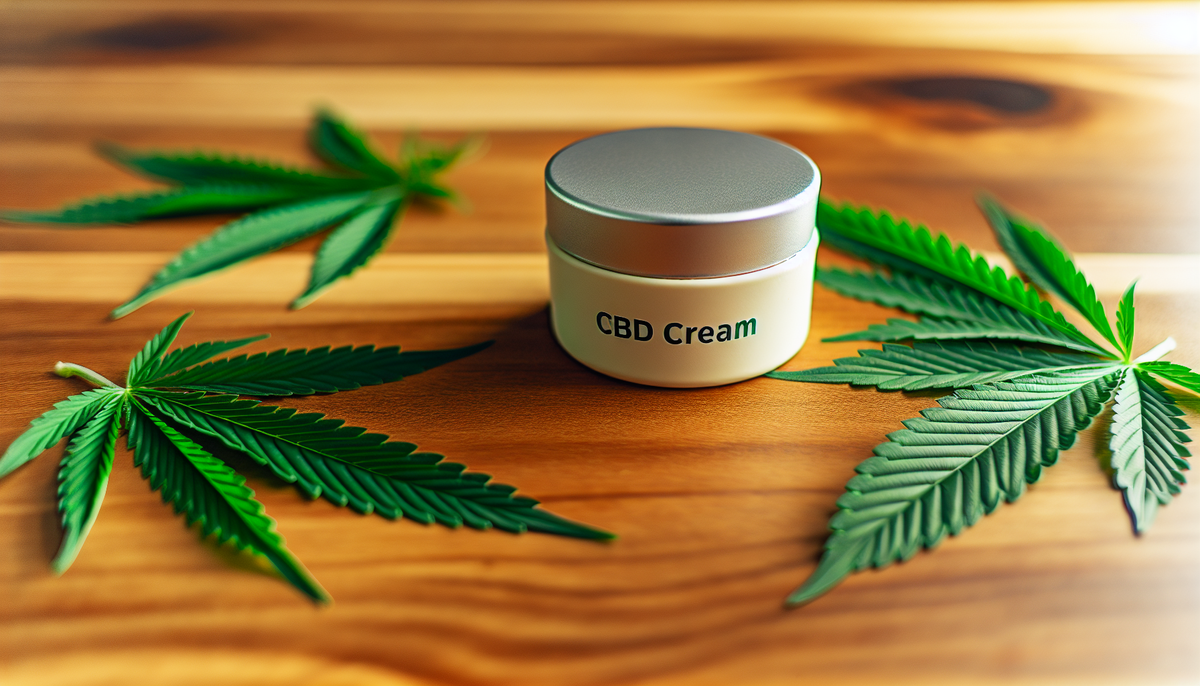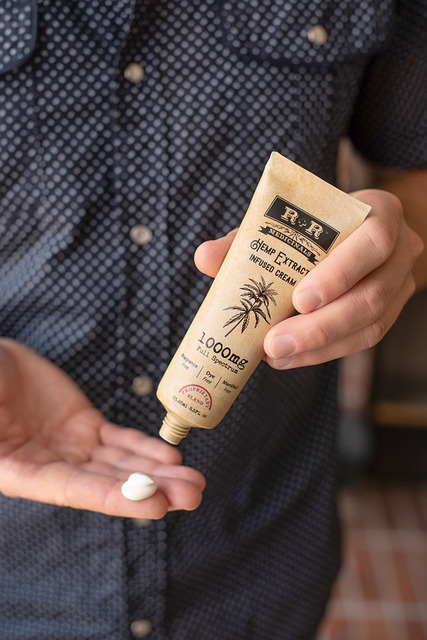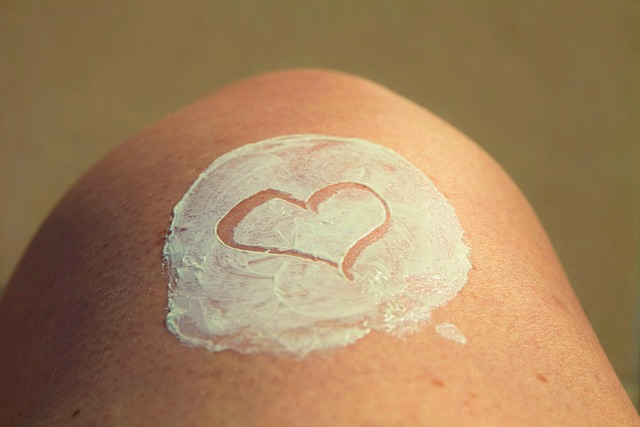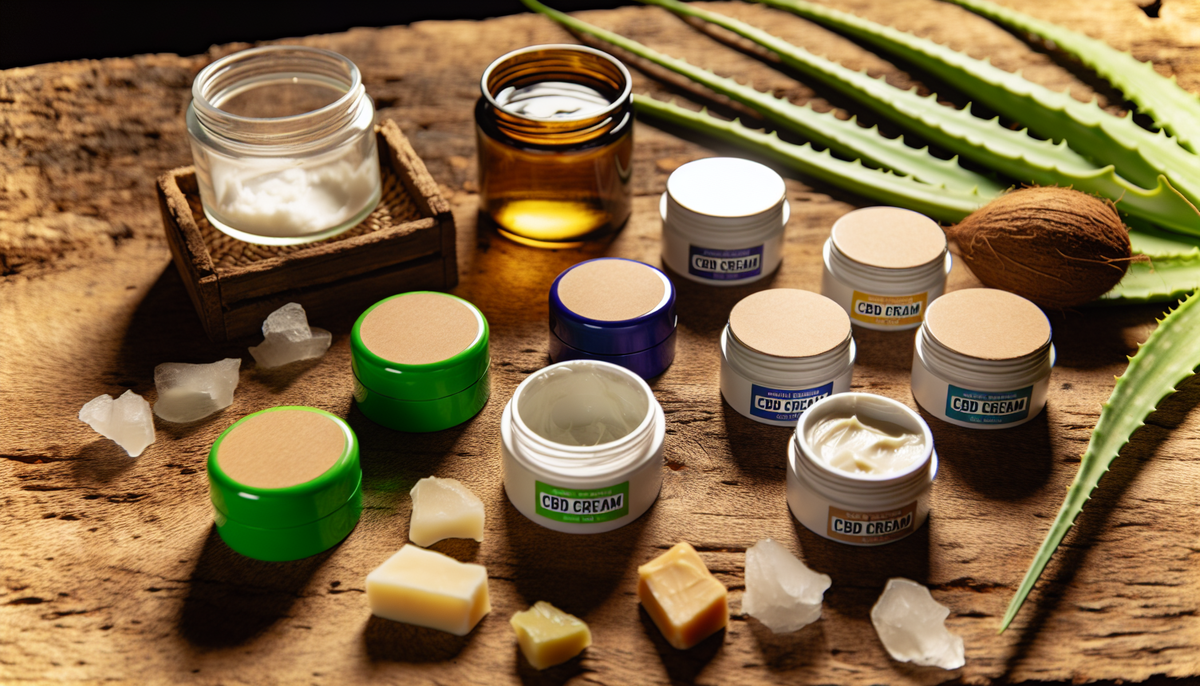CBD Cream: A Comprehensive Overview
Written by: Daniel Fayad, Subject Matter Expert and Website President
Published: March 15, 2024; Last updated: April 6, 2024
- 1. Key Takeaways
- 2. Understanding CBD Cream: What It Is and How It Works
- 2.1 Types of CBD: Isolate, Broad-Spectrum, and Full-Spectrum
- 3. CBD Cream for Skin Conditions: Alleviating Symptoms and Improving Appearance
- 3.1 Anti-Inflammatory Properties
- 3.2 Wound Healing and Scar Reduction
- 4. CBD Cream for Pain Relief: Targeting Muscle and Joint Discomfort
- 4.1 Arthritis Pain Management
- 4.2 Soothing Sore Muscles
- 5. Choosing the Right CBD Cream: Factors to Consider
- 5.1 Evaluating Ingredients and Quality
- 5.2 Determining the Appropriate Potency
- 6. Potential Side Effects and Precautions
- 7. Natural Alternatives to CBD Cream
- 8. In Summary, What Does CBD Cream Do?
- 9. Frequently Asked Questions
- 9.1 What happens when you use CBD cream?
- 9.2 What is CBD skin cream good for?
- 9.3 Does CBD cream make you calm?
- 9.4 What does CBD cream do for inflammation?
- 9.5 What are the cons of CBD cream?
- 9.6 Does CBD help with inflammatory skin diseases?
- 10. References
If you’re wondering, “What does CBD cream do?” it’s a compound known for easing inflammation and pain when applied topically. Unlike its cousin THC, CBD cream offers therapeutic benefits without a high. This article will guide you through its role in improving skin conditions, relieving discomfort, and choosing the suitable CBD cream for your needs.
Key Takeaways
CBD cream interacts with skin receptors to provide anti-inflammatory benefits without psychoactive effects, potentially aiding skin conditions and joint pain relief.
CBD creams have varying potencies and can be derived from isolate, broad-spectrum, and full-spectrum CBD, with full-spectrum containing THC and broad-spectrum being THC-free.
Choosing the suitable CBD cream involves considering the source of hemp, verifying third-party testing for quality, and determining the appropriate potency for individual therapeutic needs.
Understanding CBD Cream: What It Is and How It Works

CBD cream, extracted from the cannabis plant, is a topical product known for its anti-inflammatory properties that may alleviate skin conditions and joint pain. Unlike THC, another compound derived from the cannabis plant, CBD doesn’t have psychoactive properties, making it a safer option for those seeking relief without the ‘high.’ CBD oil, which also comes from the cannabis plant, shares similar benefits with CBD cream. Both of these are popular CBD products that people use for various purposes.
The working mechanism of CBD cream involves its interaction with cannabinoid receptors on the skin surface when applied. This targeted relief sets it apart from CBD oils, usually ingested.
Types of CBD: Isolate, Broad-Spectrum, and Full-Spectrum
The type of CBD used in creams can significantly influence its effects. CBD creams can be formulated with:
CBD isolate, which strictly contains CBD
Full-spectrum CBD, which includes a range of cannabis compounds, including THC
Broad-spectrum CBD, which is similar to full-spectrum but doesn’t contain THC.
Each type offers different levels of cannabinoids and THC content.
Addressing various forms of skin pathology is possible with these CBD products, with skin creams predominantly using broad-spectrum CBD.
CBD Cream for Skin Conditions: Alleviating Symptoms and Improving Appearance

CBD creams have shown promising results in treating various skin conditions, including acne, psoriasis, and eczema. Their anti-inflammatory properties may reduce symptoms and enhance skin appearance.
Regular CBD creams have improved conditions like psoriasis, eczema, and dry skin, presenting a natural alternative for individuals battling these skin ailments. ³
Anti-Inflammatory Properties
The anti-inflammatory properties of CBD creams are backed by clinical studies that demonstrate CBD’s ability to reduce inflammation. While the precise mechanisms behind these effects are still under investigation, preliminary research indicates that topical CBD may alleviate certain skin conditions such as eczema and psoriasis by leveraging these anti-inflammatory properties. ¹
Wound Healing and Scar Reduction
In addition to easing skin conditions, CBD creams may enhance wound healing and scar reduction. They can:
Speed up cell renewal
Shorten the healing period
Promote skin regeneration
Reduce inflammation
Scientific studies suggest CBD creams regulate collagen production and promote skin cell regeneration, pivotal in wound healing and potentially contributes to scar reduction.
CBD Cream for Pain Relief: Targeting Muscle and Joint Discomfort

In addition to skincare, CBD creams have been integrated into pain management regimens. They engage with pain receptors to deliver targeted relief to muscles and joints, making them a preferred choice for arthritis patients and athletes.
The recommended method for applying CBD cream for pain relief is to massage a thin layer into the skin at the site of pain and adjust the amount as necessary.
Arthritis Pain Management
CBD creams have shown potential in managing arthritis pain by reducing inflammation and improving joint function. The Arthritis Foundation has emphasized the correlation between the application of CBD and improvements in arthritis symptoms, leading to a decrease in the reliance on other medications.
By inhibiting the NF-κB pathway and decreasing levels of inflammatory cytokines, CBD can effectively reduce inflammation associated with arthritis. ²
Soothing Sore Muscles
CBD creams also offer a solution for muscle soreness. These creams can alleviate pain and inflammation by interacting with pain receptors and providing localized relief, offering temporary relief for muscle soreness. The relief for sore muscles is typically felt within 10-20 minutes of application, making CBD creams a quick and effective option for muscle pain relief.
Choosing the Right CBD Cream: Factors to Consider

Various factors must be considered when selecting a CBD cream to guarantee the best match for your needs. It’s beneficial to prioritize products with organic, U.S.-grown hemp like cbdMD Premium Freeze and confirm third-party testing for ingredient accuracy.
The CBD concentration or CBD potency indicates the strength of the cream. The appropriate potency based on individual needs is vital for achieving therapeutic benefits.
Evaluating Ingredients and Quality
When evaluating the ingredients of a CBD cream, it’s advisable to opt for products that are derived from all-natural, U.S.-grown hemp and to review the ingredient label for any potential irritants or allergens. Third-party lab testing is crucial as it validates the safety and quality of the product through the issuance of a Certificate of Analysis (COA), instilling confidence in consumers regarding the product’s assertions. Additionally, it is essential to ensure that product manufacturers address safety concerns during the production process.
Determining the Appropriate Potency
Determining the appropriate potency of a CBD cream is crucial to its effectiveness. Starting with a lower potency allows you to assess your body’s response and prevents product overuse. To enhance the potency safely and effectively, start with a small amount and gradually increase the dosage until the desired effect is attained.
Factors such as the severity of chronic pain, including jaw pain, and previous exposure to CBD should be considered when selecting the appropriate potency.
Potential Side Effects and Precautions
CBD creams are generally associated with fewer side effects compared to other medications, although potential side effects like contact dermatitis should not be overlooked. Particularly if you’re on specific medications, a consultation with a healthcare professional or doctor before using CBD cream is essential to minimize the risk of potential interactions.
To prevent potential irritation, it’s advised to patch-test the product by applying a small amount to the inside of your wrist and observing for any signs of irritation.
Natural Alternatives to CBD Cream
While CBD creams offer numerous benefits, there are also natural alternatives that can provide similar effects. These include arnica, vitamin B6, ostrich oil, honey, chamomile, aloe vera, and tea tree oil.
For instance, arnica extract or cream has demonstrated potential for pain relief and might also assist in easing arthritis symptoms and muscle aches.
In Summary, What Does CBD Cream Do?
In conclusion, CBD creams offer many potential benefits, from alleviating skin conditions to providing pain relief. Whether you’re dealing with arthritis, muscle soreness, or a skin condition, CBD creams may offer a natural solution. However, choosing the right product is essential, considering ingredients, quality, and potency. Although generally safe, potential side effects and interactions should be considered. As with any product, it’s always best to consult a healthcare professional before using it.
Frequently Asked Questions
What happens when you use CBD cream?
CBD cream may help alleviate symptoms of some skin conditions and provide anti-inflammatory effects, which can help treat dry skin or certain inflammatory skin disorders.
What is CBD skin cream good for?
CBD skin cream benefits conditions such as eczema, psoriasis, arthritis, and inflammation. When using CBD skin cream, start with a small amount and gradually increase if needed.
Does CBD cream make you calm?
CBD cream can calm you by promoting relaxation and relieving stress and anxiety.
What does CBD cream do for inflammation?
CBD cream can help reduce inflammation by containing anti-inflammatory properties and increasing endocannabinoid signaling, which affects the body’s cannabinoid receptors, ultimately regulating cytokines that control inflammation.
What are the cons of CBD cream?
Some potential cons of CBD cream include skin irritation, such as itching, redness, or rash at the application site. Consult with a healthcare professional if you experience any discomfort or side effects.
Does CBD help with inflammatory skin diseases?
CBD’s anti-inflammatory, antioxidant, and skin-soothing properties make it an attractive candidate for inflammatory skin.
References
Zou, S., & Kumar, U. (2018). Cannabinoid Receptors and the Endocannabinoid System: Signaling and Function in the Central Nervous System. International journal of molecular sciences, 19(3), 833. https://doi.org/10.3390/ijms19030833
Hall, N., James, B., Bhuiyan, M. A. N., Crane, E., Falgout, C., & Murnane, K. S. (2023). Topical cannabidiol is well tolerated in individuals with a history of elite physical performance and chronic lower extremity pain. Journal of cannabis research, 5(1), 11. https://doi.org/10.1186/s42238-023-00179-8
Makhakhe L. (2022). Topical cannabidiol (CBD) in skin pathology – A comprehensive review and prospects for new therapeutic opportunities. South African family practice : official journal of the South African Academy of Family Practice/Primary Care, 64(1), e1–e4. https://doi.org/10.4102/safp.v64i1.5493
Hammell, D. C., Zhang, L. P., Ma, F., Abshire, S. M., McIlwrath, S. L., Stinchcomb, A. L., & Westlund, K. N. (2016). Transdermal cannabidiol reduces inflammation and pain-related behaviours in a rat model of arthritis. European journal of pain (London, England), 20(6), 936–948. https://doi.org/10.1002/ejp.818

Written by Daniel Fayad - Subject Matter Expert and Website President
Dan Fayad is a results-driven healthcare administration expert and content writer. With a Master of Health Administration from the University of Southern California, he’s carved a niche for himself in the dynamic world of healthcare and business development. Dan uses his experience to educate and empower people on their wellness journeys.
Join the CBDeals Club!
Get 10% off your first order and receive our best and exclusive promotions directly to your inbox!

